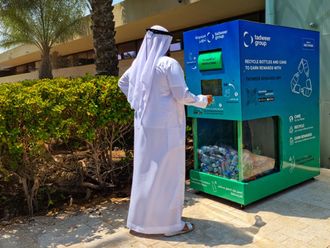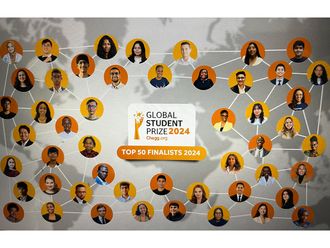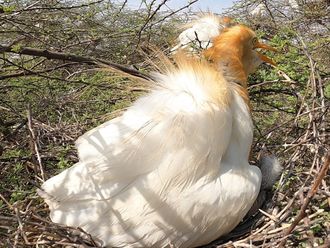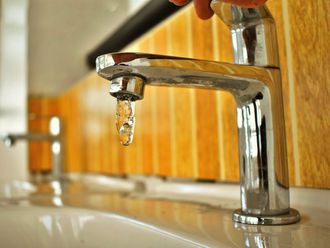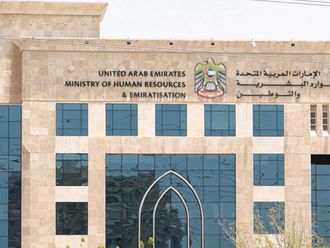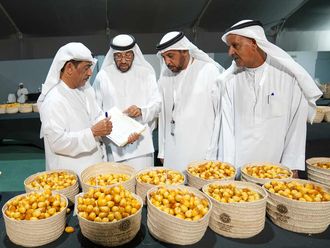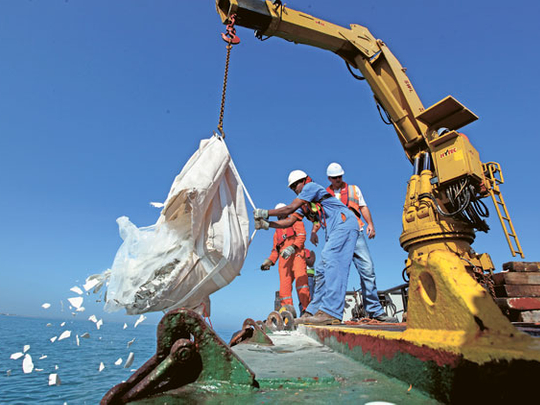
Dubai: When a global airline decides to deep-six discarded items no longer used on its commercial aircraft, the waste usually makes its way to a dumpster bound for the landfill.
But in an unusual break from the routine, Emirates airline has come up with a creative way of discarding roughly 18 tonnes of worn-out chinaware used on its fleet of 169 passenger aircraft whilst creating new habitat for marine animals in the waters off Dubai.
Earlier this week on a flat blue sea early in the morning, a large steel tug steamed towards a point just west of the Palm Jebel Ali to dispatch its unusual payload on the seabed.
Once anchored over a large underwater summit, marine crews manoeuvred an on-board crane to swing bags of crushed china weighing a tonne each and, with the pull of a rip cord, released the non-toxic china pieces into the water.
With precision, 18 bags of material were emptied to create a carefully positioned layer on the sea floor of new china substrata with a view to providing a 100 square-metre nursery of sorts for thousands of young Gulf Pearl oysters.
The new substrate will help replace marine habitat lost via construction of offshore projects along the Dubai shoreline such as the Palm Jebel Ali, Palm Jumeirah and The World islands.
The pieces of fine china are a far better medium for young oysters to grab a toehold than traditional sandy bottom landscapes common in Gulf waters, said Keith Wilson, marine programme director of Emirates Marine Environmental Group (EMEG).
The marine group has worked in partnership with Emirates to construct the new underwater oyster bed.
"When you give the oyster a place to grow, it does great but it needs to be a suitable substrate," Wilson told Gulf News on site during the operation.
The new patch of shaped china substrate is located on the thin part of the tear-drop shaped seabed summit or mound that is also bound to the northwest by a large crop of sea grass from which tiny Gulf Pearl oysters are starting out in life.
As the oysters mature into juveniles, they migrate from grassy areas looking for a permanent seabed home, preferably one with tiny outcroppings on which to attach themselves in mild currents.
Prime habitat conditions
Wilson said the position of the crushed chinaware so close to the sea grass in an area with an underwater current of about a quarter of a knot should offer prime habitat conditions for growing young oysters — once the lifeblood of the UAE seafaring community which harvested and sold gleaming white pearls.
With the new oyster bed in place, Wilson said EMEG staff will begin monitoring the site to gauge the progress of the underwater experiment.
"We will monitor at least bi-annually," said Wilson. "We don't expect to see anything short term; it will take a couple of years."
Doing all and everything to help foster a larger natural stock of the Gulf Pearl oyster is paramount to keeping a growing tide of pollution of the Gulf by GCC countries at bay.
"The Gulf Pearl oyster is a fundamental part of the ecosystem. It's important for the environment because of its filtering capabilities," Wilson said.
By filtering the Gulf waters, the oyster is an important link up and down a food chain that depends on clean waters to survive.
Wilson dismissed any notions that the crushed chinaware on the seabottom was just another form of man-made pollution entering the marine environment.
He said the new-habitat project is no different than countless other efforts around the globe in which objects large and small are deliberately sent to the ocean bottom to create new artificial reefs or seabeds to encourage life. Large steel ships declared surplus or no longer seaworthy, for example, are routinely sunk at sea in protected wildlife areas to provide completely new artificial reefs to promote marine life.
The Emirates chinaware-EMEG project was carried out according to strict provisions under what's called the London Convention, Wilson said, an international agreement designed to protect marine habitats.
The project also met with approvals from authorities such as the Jebel Ali Port Authority.


